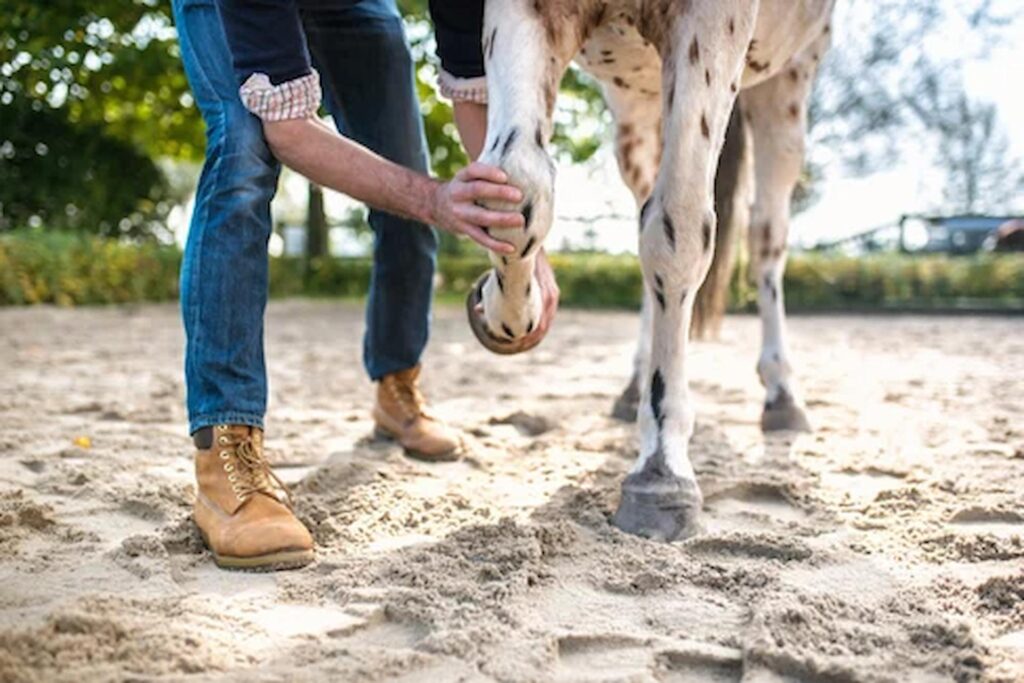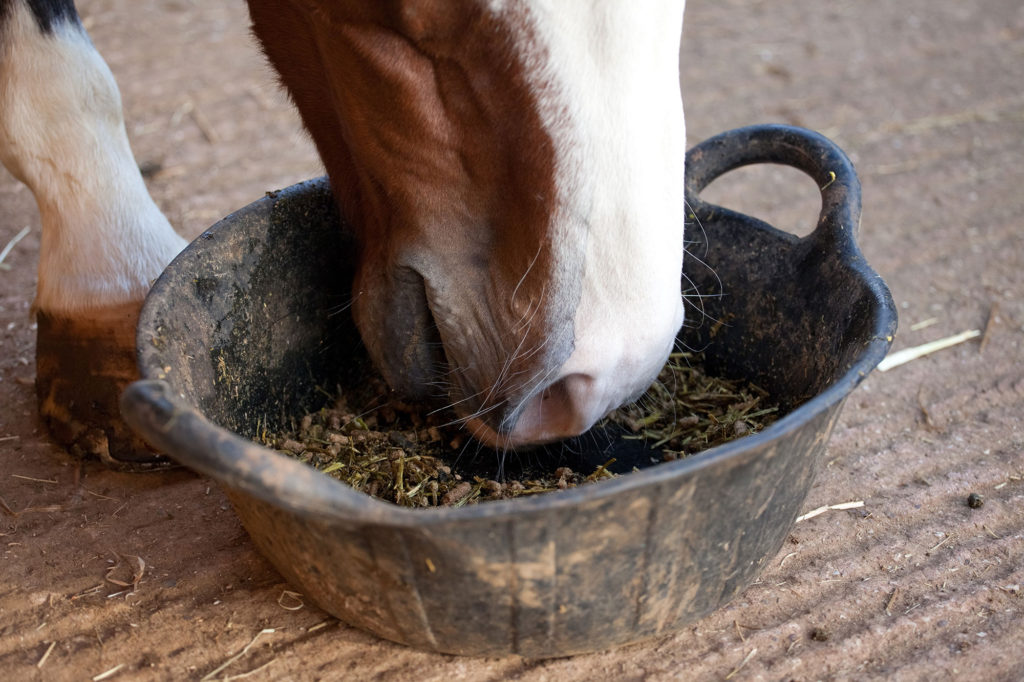Laminitis, a debilitating condition affecting a horse’s hooves, can strike without apparent warning, making early detection crucial for effective intervention and management. As responsible horse owners, understanding the subtle signs of laminitis is imperative.
Laminitis is a painful inflammation of the laminae, the sensitive tissues connecting a horse’s hoof wall to the underlying bone. This condition often results from the disruption of blood flow to the laminae, leading to a breakdown of the bond between the hoof wall and the internal structures.
Early Signs to Watch For
Increased Digital Pulse – One of the earliest indicators of laminitis is an elevated digital pulse in the affected hooves. While digital pulse can vary among horses, a sudden and noticeable increase may signal inflammation. Regularly check your horse’s digital pulse by feeling the artery on the inside of the pastern or just above the fetlock.
Reluctance to Move – Horses with laminitis may exhibit reluctance to move or walk, especially on hard surfaces. They may adopt a characteristic “rocked-back” stance, shifting their weight between hooves to alleviate discomfort. Pay attention to changes in gait and any signs of stiffness or hesitation.
Heat in the Hooves – Feel the hooves for unusual warmth, particularly in the toe region. Increased heat can indicate inflammation and stress within the hoof structures. Use the back of your hand to assess temperature differences between hooves.
Shifting Weight – Laminitic horses frequently shift their weight between hooves to find a comfortable position. This constant weight-shifting is a clear signal of discomfort and warrants immediate attention.
Visible Rings or Bruising on Hoof Wall – Inspect the hooves for rings, bruising, or changes in the hoof wall texture. These visual cues may indicate stress or damage to the laminae. Regular farrier visits and hoof care can help identify such changes early on.
Changes in Behaviour – Laminitis can cause behavioural changes, including irritability, depression or a noticeable decrease in appetite. Keep an eye on your horse’s overall demeanour, as shifts in behaviour can be early indicators of underlying health issues.
Contributing Factors
Understanding the factors contributing to laminitis can help reduce the risk of laminitis. Common triggers include:
High-Sugar Diets – Diets rich in sugars and starches can increase the risk of laminitis. Consider low-sugar and low-starch forage options, such as fibre-rich feeds.
Obesity – Overweight horses are more susceptible to laminitis. Maintain a healthy body condition through regular exercise and a balanced diet.
Grass Intake – Monitor grazing, especially during periods of rapid grass growth. Strip grazing and the use of grazing muzzles can help regulate grass intake.
Endocrine Disorders – Conditions like Equine Metabolic Syndrome (EMS) or Pituitary Pars Intermedia Dysfunction (PPID or Cushing’s disease) can predispose horses to laminitis. Regular veterinary check-ups and monitoring for signs of these health problems are essential.
Concussion and Hard Surfaces – Excessive concussions on hard surfaces, such as prolonged trotting on hard ground or working on unforgiving terrain, can contribute to laminitis. Ensure your horse’s exercise routine suits their fitness level and the ground conditions.
Sudden Dietary Changes – Abrupt shifts in a horse’s diet, whether an increase in cereal grain intake or a rapid transition to lush pasture, can trigger laminitis. Gradual adjustments and careful monitoring during dietary changes are crucial to reduce the risk of laminitis occurrence.
By being mindful of these additional factors, you can proactively manage your horse’s environment and lifestyle, reducing the risk of laminitis and promoting their overall hoof health.
When to Take Action
If you suspect laminitis, swift action is paramount to ensure the well-being of your horse. Consultation with your veterinarian at the earliest signs of laminitis is crucial, as early intervention can significantly impact the prognosis and potentially reduce further deterioration.
Upon contacting your veterinarian, they will likely conduct a thorough examination to assess your horse’s condition. This examination may include specialised diagnostics to confirm the presence of laminitis and determine its severity. X-rays are commonly employed to visualise changes within the hoof structure, providing valuable insights into any potential rotation or sinking of the coffin bone.
Spotting the early signs of laminitis requires diligence and a keen understanding of your horse’s normal behaviour and physiology. Regular hoof care and awareness of potential triggers and risk factors are vital in reducing the risk of laminitis. By being proactive and responsive to any changes in your horse’s condition, you empower yourself as a caretaker to provide the timely care needed to safeguard your horse against the debilitating effects of laminitis.


